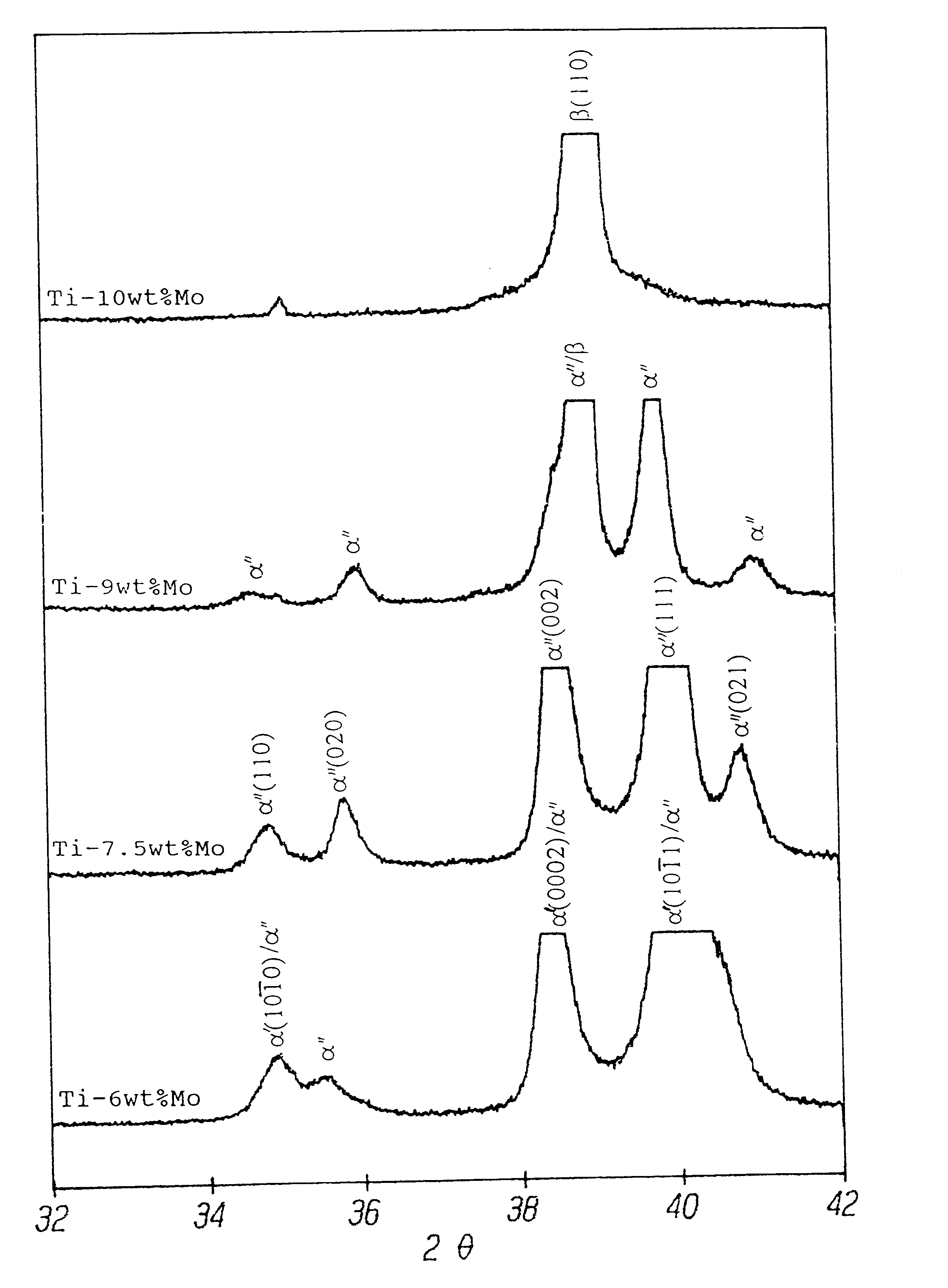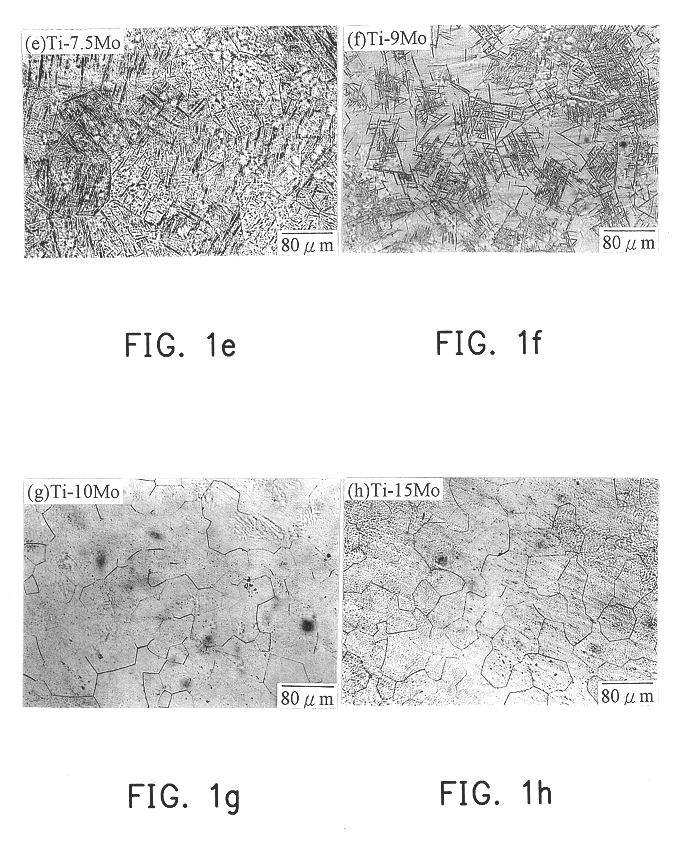Biocompatible low modulus titanium alloy for medical implant
a titanium alloy, low modulus technology, applied in the field of biocompatible low modulus titanium alloy for medical implants, can solve the problems of insufficient bone loading, bone resorption, and shielding phenomenon
- Summary
- Abstract
- Description
- Claims
- Application Information
AI Technical Summary
Benefits of technology
Problems solved by technology
Method used
Image
Examples
example 8-9
In these examples, 1 wt % of alloying elements: Zr (.alpha.-stabilizer), Nb (.beta. stabilizer) each of 99.95% in purity were added into Ti-7.5 Mo. Ti-7.5Mo-1Nb and Ti-7.5Mo-1Zr alloys were prepared from 99.9% pure titanium and 99.95% pure molybdenum using a commercial arc-melting vacuum-pressure type casting system (Castmatic, Iwatani Corp., Japan). The melting chamber was first evacuated and purged with argon. An argon pressure of 1.5 kgf / cm.sup.2 was maintained during melting. Appropriate amounts of metals were melted in a U-shaped copper hearth with a tungsten electrode. The ingots were re-melted three times to improve chemical homogeneity.
Prior to casting, the ingots were re-melted again in an open-based copper hearth under an argon pressure of 1.5 kgf / cm.sup.2. The difference in pressure between the two chambers allowed the molten alloy to quickly drop into a room temperature graphite mold as soon as the alloy was melted.
Surfaces of the cast alloys for microstructural study we...
example 10
A titanium alloy containing 7.5 wt % of molybdenum (Ti-7.5Mo) was prepared from titanium of 99.9% in purity and molybdenum of 99.95% using a commercial arc-melting vaccum-pressure type casting system (Castmatic, Iwatani Corp., Japan). The melting chamber was first evacuated and purged with argon. An argon pressure of 1.5 kgf / cm.sup.2 was maintained during melting. Appropriate amounts of metals were melted in a U-shaped copper hearth with a tungsten electrode. The ingot was re-melted three times prior to casting to improve chemical homogeneity.
Prior to casting, the ingot was re-melted again in an open-based copper hearth under an argon pressure of 1.5 kgf / cm.sup.2. The difference in pressure between the two chambers allowed the molten alloys to instantly drop into the graphite mold when melted.
The cast alloy was sectioned using a Buehler Isomet low speed diamond saw to obtain specimens. The alloy specimens were then hot rolled at 900.degree. C. to reduce their thickness by 70% throug...
example 11
Biocompatibility of Ti-7.5Mo alloy was evaluated by directly implanting cast Ti-7.5Mo rods into prepared bone cavities of Taiwan native goats. Cylindrical-shaped Ti-7.5Mo rods with 5.8 mm in diameter and 25 mm in length were prepared using the same casting procedure set forth in Example 10. After casting, the surface of the alloy rods were sand-blasted using 50 .mu.m Al.sub.2 O.sub.3 particles. The sand-blasted Ti-7.5Mo rods were cleaned in 95% alcohol in an ultrasonic cleaner for 30 minutes and sterilized at 90.degree. C. for 8 hours prior to operation. The Taiwan native goats were anesthetized with intravenous ketamin under a standard aseptic procedure. Bone cavities of 6.7 mm in diameter were prepared by drilling through the bicortical bone on coronary plane. The sterilized Ti-7.5Mo rods were then implanted into the diaphysis portion of either femur or tibia bone by thumb compression. When femur bone was selected as implant site, bone cavities were prepared via lateral approach. ...
PUM
| Property | Measurement | Unit |
|---|---|---|
| Modulus | aaaaa | aaaaa |
| Biocompatibility | aaaaa | aaaaa |
Abstract
Description
Claims
Application Information
 Login to View More
Login to View More - R&D
- Intellectual Property
- Life Sciences
- Materials
- Tech Scout
- Unparalleled Data Quality
- Higher Quality Content
- 60% Fewer Hallucinations
Browse by: Latest US Patents, China's latest patents, Technical Efficacy Thesaurus, Application Domain, Technology Topic, Popular Technical Reports.
© 2025 PatSnap. All rights reserved.Legal|Privacy policy|Modern Slavery Act Transparency Statement|Sitemap|About US| Contact US: help@patsnap.com



